The new way of automated cryo-EM grid preparation
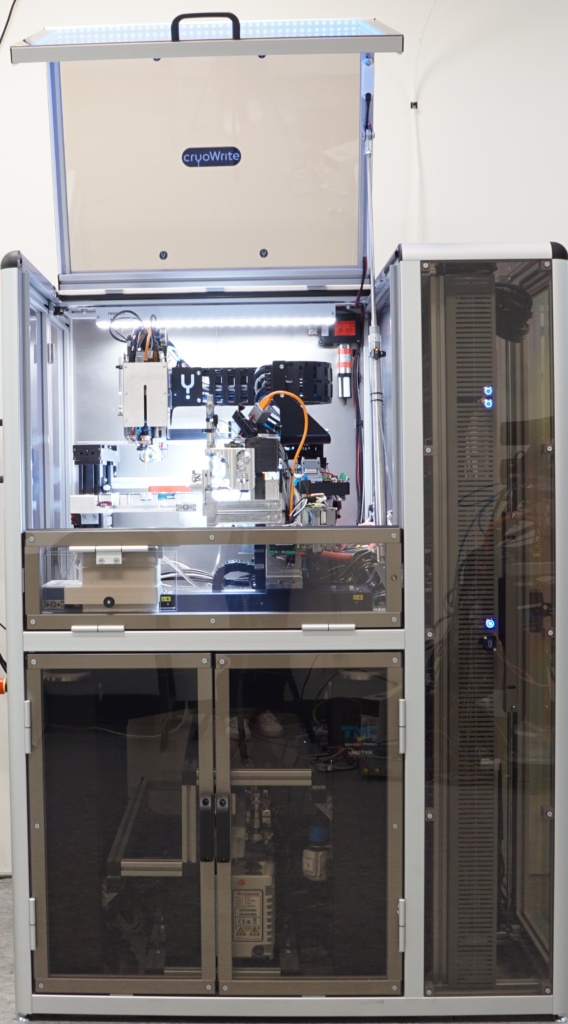
The cryoWriter is a grid preparation robot and lab in a hood. It can purify, write-to-the-grid and vitrify biomolecules.
Main cryoWriter Features
- Automated pipetting system, writing 1-2 nano-L sample volumes, loss-free on grids, omitting manual pipetting and blotting
- Automated grid handling: from the grid box via glow discharge, sample writing, vitrification, to storage
- Pipette moves in 3D with µm-accuracy and has subnanoliter aspiration and dispensing accuracy
- Modules for microfluidic protein isolation or single-cell analysis
- Clearly structured and easy to use GUI that allows the creation of individual protocols
A visionary concept
The cryoWriter uses a visionary concept for automated sample preparation for cryogenic electron microscopy (cryo-EM). The tools us useful for both structure based drug design and structural biology. Using microcapillaries, the cryoWriter replaces manual pipetting tasks for grid preparation in an automated way. It is therefore a robot that automatically dispenses (write) nanoliter sized samples on a grid and vitrify them for subsequent cryo-EM analysis. The original system has been optimized for single particle analysis. Such particles can be globular proteins, but also membrane proteins, or filamentous proteins.
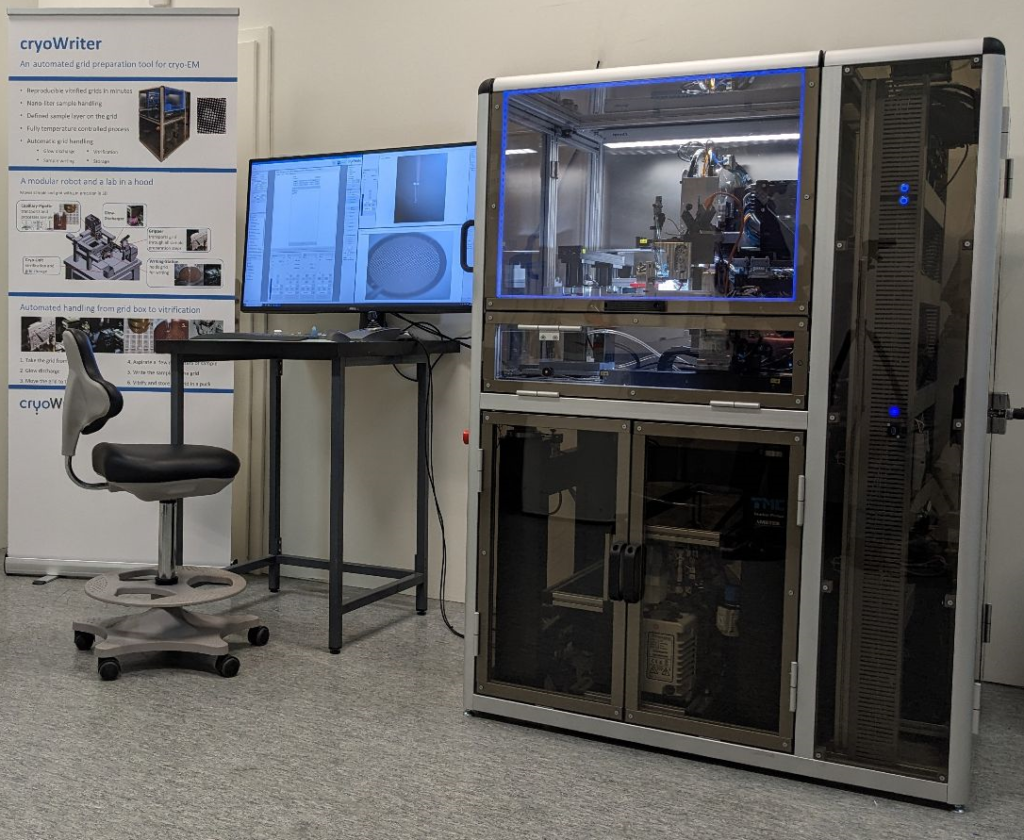
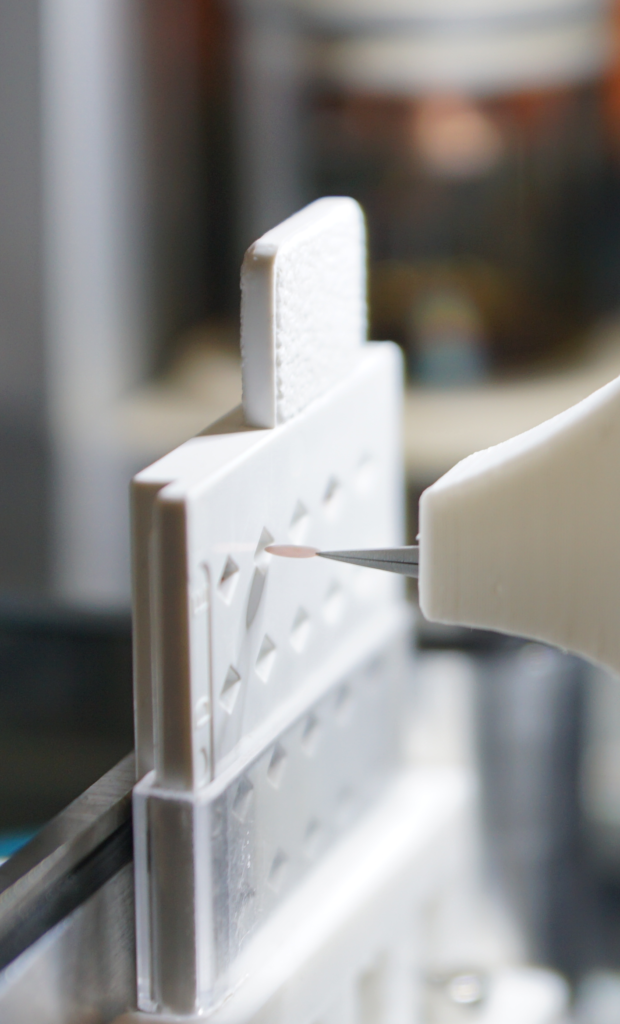
The gripper and glass capillary are at the core of the system and are key to create a flexible, automated liquid handling system. Firstly, the gripper automatically transports a transmission electron microscope (TEM) grid to all stations. Secondly, the pipette gives a better handle on the air-water interface than other techniques on the market. This makes grid writing more reliable. Finally, the use of pipettes provides the basis for the unprecedented modularity of the cryoWriter.

Examples of protocols, methods and written samples you can find in our application note page.
From grid box to cryo puck in under two minutes
A gripper automatically carries grids from a grid box to the writing platform, via the on-board glow discharge unit (1-3). Subsequently, the pipette unit takes over, with loading of the sample and writing it to the grid. Finally, the sample is plunged and stored for subsequent analysis by cryo-EM.
The whole procedure takes less than 2 minutes: From picking the grid out of the grid box, to storing the sample in the cryo puck. The most time consuming step is the hydrophilization of the grid in the glow discharge unit. This costs more than half of the time.
Once the sample is written on the grid, it takes less than 200ms to vitrify the sample.
Now the grids can be brought to the transmission electron microscope (TEM) for imaging, and subsequent analysis and data processing. After all, the eventual goal of a preparation is the structure of the sample.
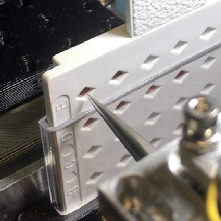
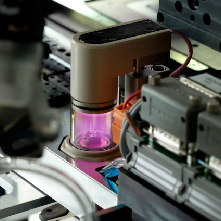
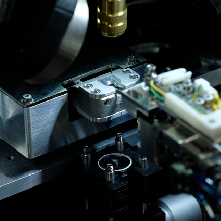
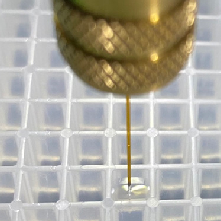
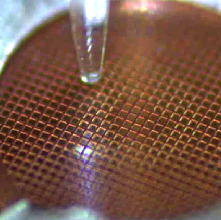
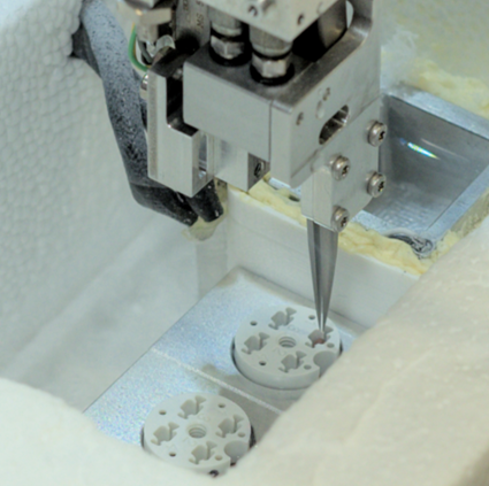
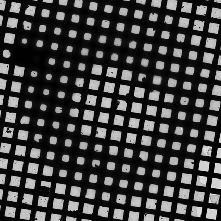

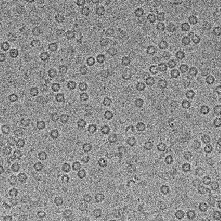
Modular design
For cryoWrite, modularity means that our instruments are upgradeable. You can configure the system to your needs and still upgrade later if desired. The capillary can for example be extended for inline purification of cell lysate using a magnetic trap. The modular design therefore makes the cryoWriter a system that covers the needs for now and in the future.
Besides the field upgradeability of the hardware, the cryoWriter comes with a flexible software platform. Whether you want to get homogeneous coverage of the grid, or drawing a pattern in the shape of a Christmas tree: The cryoWriter can do it. For this, the software provides you with a visual programming and scripting interface. In summary, the software allows you to create protocols for the cryo-EM sample preperation as you need it.
cryoWrite OS
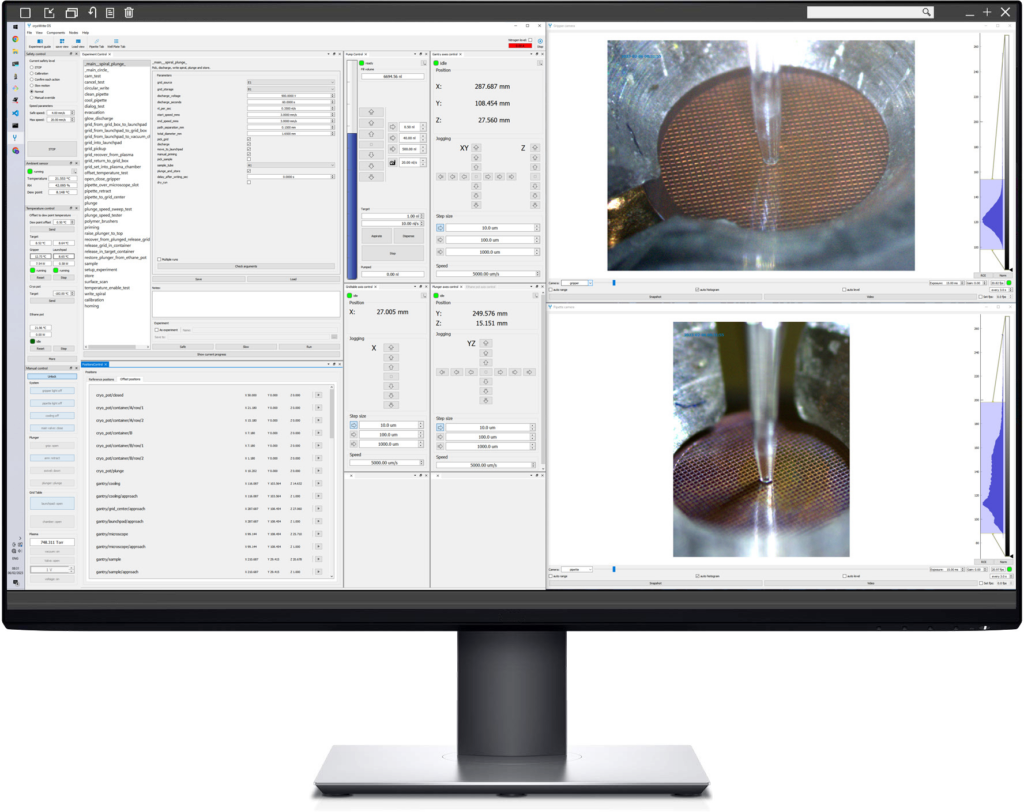
Field upgradeability
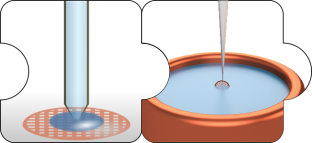
The standard cryoWriter: The robot for grid writing and vitrification
The standard cryoWriter can be extended with additional modules, without shipping in the system.
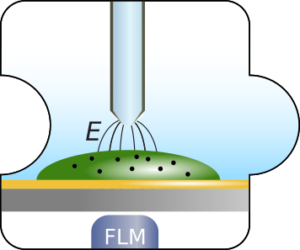
Cell picker for single-cell analysis with fluorescence option

Microfluidic protein purification module; purifies proteins in the pipette tip
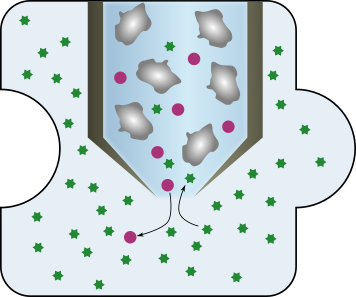
Conditioning for buffer exchange or introduction of ligands; gives a handle on the function of proteins.
Videos
3D reconstruction of TMV at 1.92 Å resolution. The filaments were deposited and vitrified with the cryoWriter. Data and movie courtesy: Claudio Schmidli, Thomas Braun group, Biozentrum, University of Basel. Electron Microscopy Databank entry: EMD-4628. Protein data bank: PDB-6R7M. More information on the preparation and data processing is found in the original publication in PNAS.
Configurations
Standard cryoWriter
- optical table for mechanical stability
- hood for operational safety
- gantry for displacing the pipette unit in 3D
- pipette unit with pipette, pump, and camera
- launch pad for clamping and cooling grid
- plunger unit with gripper and camera for transporting grid
- grid loader module for automated grid handling
- glow discharger for grid hydrophilization
- ethane unit for automated vitrification and grid storage
Accessories
- trap for magnetic bead-based affinity chromatography
- nano-incubator wells maintained at specific temperature
- inverted epi-fluorescence microscope
- cell growth table with modules for cell growth maintenance
- interference camera for liquid layer monitoring
- white light interferometer for vitrified grid inspection
- climate chamber sample activation and processing
- climate unit for hood climate control
If our literature section you find some key publications about the cryoWriter
Did you find what your where looking for? If not:
Fill in our contact form, if you are looking for more information, a quote or a demonstration. You can also send us an email at info@cryowrite.com to let us know what you think about the cryoWriter
or follow us on LinkedIn
